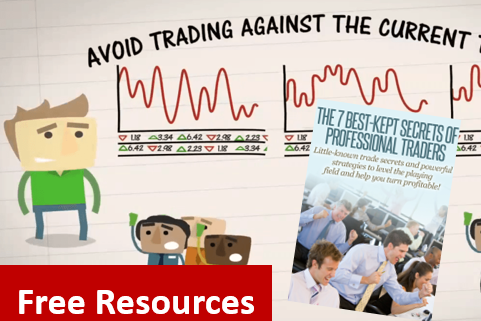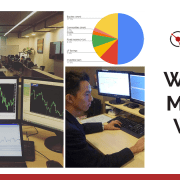The Top 3 Economic Indicators
Join our Telegram channel for more market analysis & trading tips: t.me/synapsetrading
In our previous videos, we’ve learned the importance of tracking the big market cycles and how fundamental and economic forces drive those movements in this video. We’re going to look at the top three economic indicators to look out for. In the past, only experienced professionals and economists received this data in a timely fashion, but in the Internet age everyone has access to dozens of economic surveys and indicators every week.
This data can be divided into three main groups: interest rate and monetary policy, employment and jobs data, and consumption and production data.
Now, keep in mind most of this data is based on the US economy since it’s the biggest financial powerhouse that moves global markets.
So, first let’s look at interest rate and monetary policy. For the US, the Federal Open Market Committee or FOMC makes scheduled announcements 8 times a year regarding interest rate or monetary policy. This can have a major impact on the markets because it affects the cost of borrowing and the money supply in the market. Other economies such as the eurozone, China, Australia, Japan and Switzerland have their own scheduled announcements where they set their interest rate and monetary policy.
Next, employment and jobs data. This data is very important because job creation is a leading indicator of consumer spending, which accounts for a majority of overall economic activity. The most important figure is the non-farm payroll which accounts for approximately 80% of the workers who produce the entire gross domestic product of the United States. This vital piece of economic data is released monthly usually on the first Friday after the month ends. The combination of importance and earliness makes for hefty market impacts. Other indicators include the employee cost index or ECI employment situation report and weekly jobless claims report.
Finally, there’s consumption and production data. There are various reports that measure different aspects of consumption and production, so it’s up to the savvy investor to piece it all together. Some examples include the Gross Domestic Product or GDP, Purchasing Managers Index or PMI, Philly Fed Report, Consumer Confidence Index, Producer Price Index, Consumer Price Index and the existing home sales report and housing starts. In general, the key is to look out for the kind of news that’s relevant to the current market climate.
For example, when the stock market has been bullish for many years and interest rates are really low, astute investors will keep their eyes peeled for any indication about interest rate increases as these will have a major impact on the market.
So remember, do your research and always make informed investment decisions.
 Our flagship mentoring program is suitable for both beginners and advanced traders, covering the 4 strategies which I used over the past 15 years to build up my 7-figure personal trading portfolio.
Our flagship mentoring program is suitable for both beginners and advanced traders, covering the 4 strategies which I used over the past 15 years to build up my 7-figure personal trading portfolio.
 If you're looking for a reputable brokerage that covers all products (SG stocks, US stocks, global stocks, bonds, ETFs, REITs, forex, futures, crypto) and has one of the lowest commissions, this is what I currently use.
If you're looking for a reputable brokerage that covers all products (SG stocks, US stocks, global stocks, bonds, ETFs, REITs, forex, futures, crypto) and has one of the lowest commissions, this is what I currently use.
After trading for 18 years, reading 1500+ books, and mentoring 1000+ traders, I specialise in helping people improve their trading results, by using tested trading strategies, and making better decisions via decision science.













Leave a Reply
Want to join the discussion?Feel free to contribute!